Flower bed ideas – beautiful ways to create floral displays in your garden
Our flower bed ideas will inspire you if you want to create a stunning flower garden or have a new flower bed to plant and no clue where to start
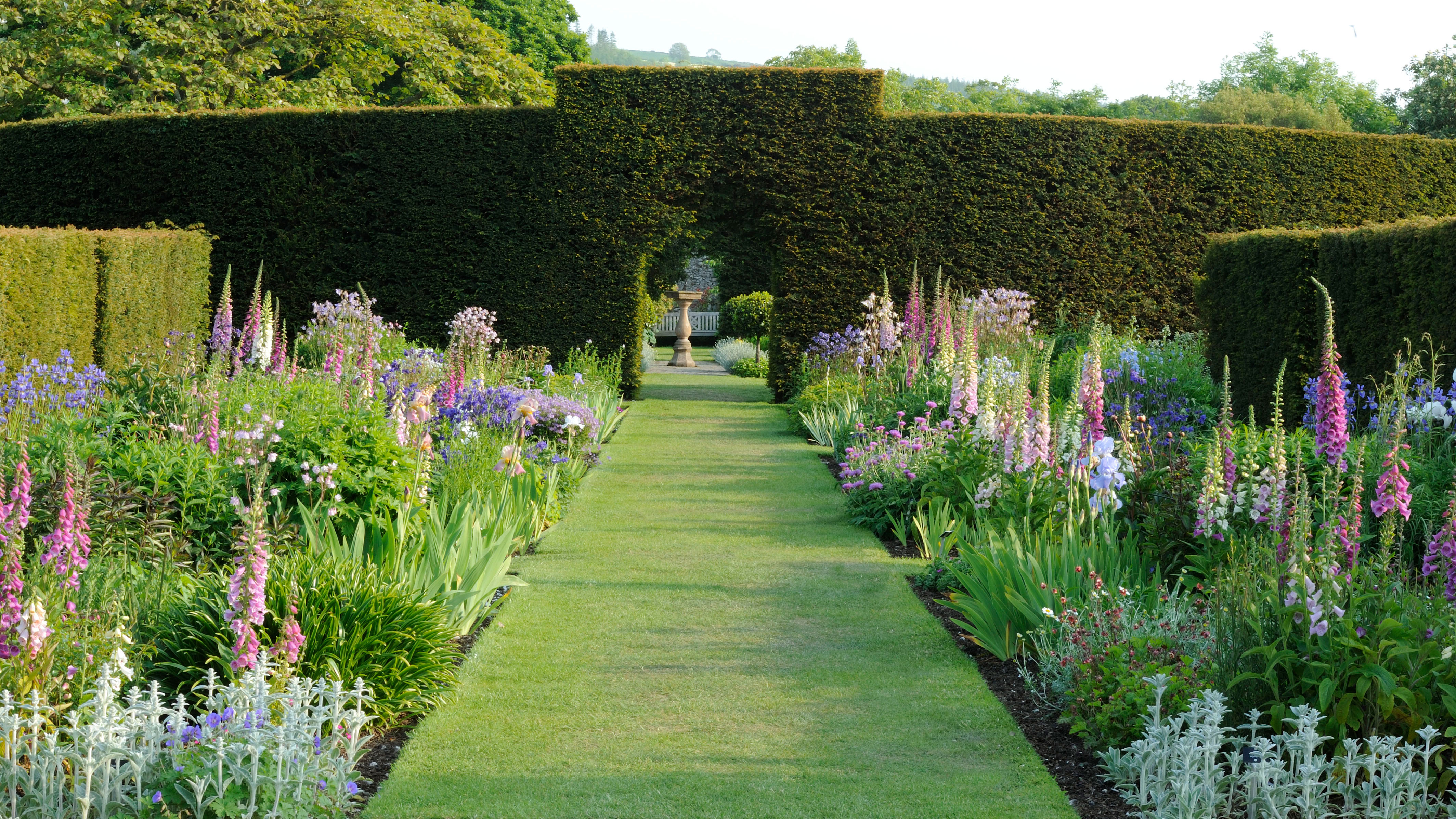

When planning your flower bed ideas, the most important step is to be able to visualize what your beds will look like in the future. Patience is key.
While your flower bed might not look like much when it's first planted, in a few months it will be much fuller, taller, and more colorful – if that is what you want. The key is anticipating the heights, colors, textures, and mass of all the various plants, and factoring this in to your garden ideas.
The best flower bed ideas will typically have smaller more dainty plants at the front, medium height varieties in the middle, then tall plants and flowers at the back to ensure you get to enjoy the blooms in all of their glory.
Flower bed ideas
Our curated collection of flower bed ideas and flower garden inspiration will set you on the way to creating your dream garden space, whatever its shape and size.
1. Use flower beds to line a garden path
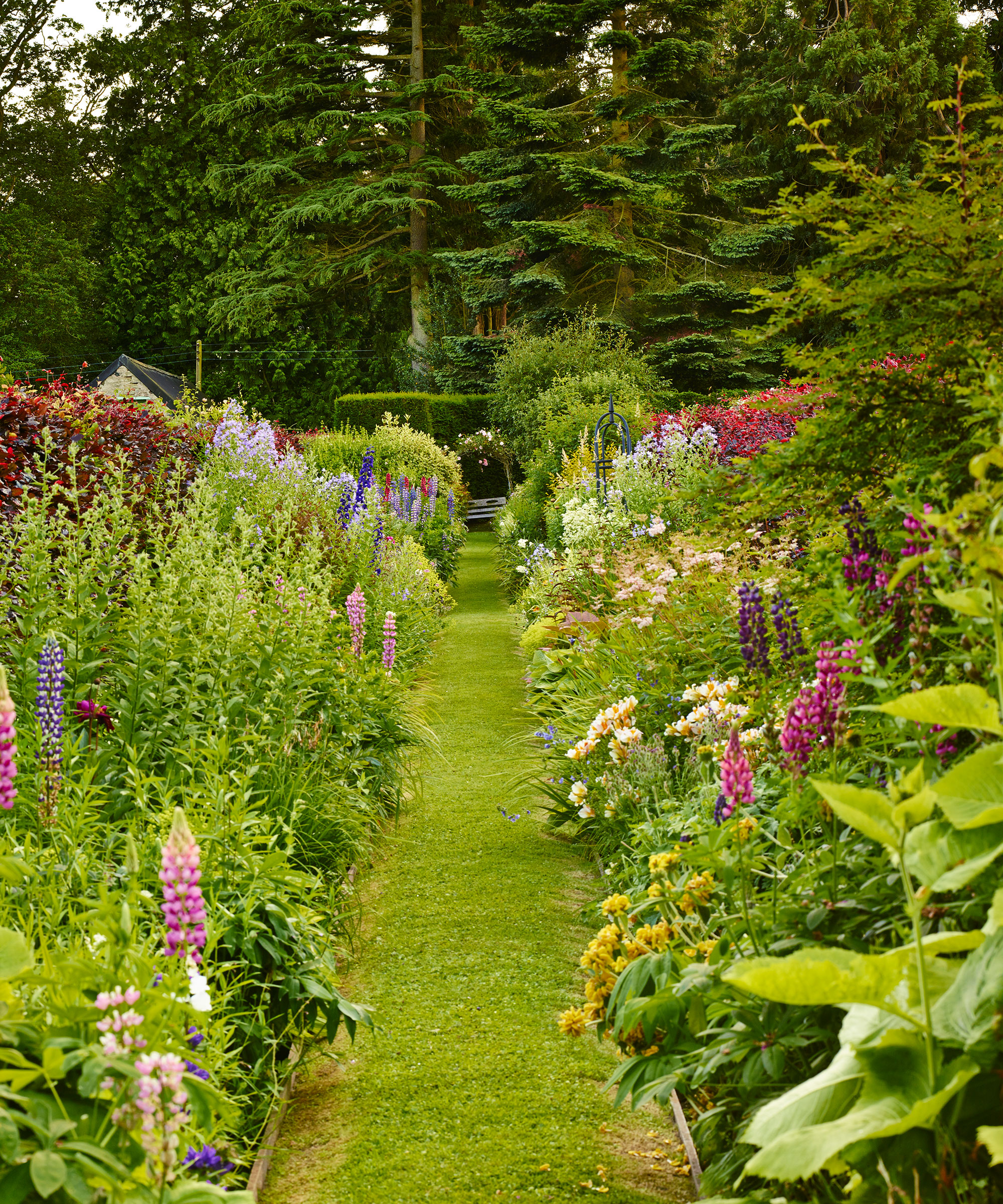
Whether you opt for raised garden bed ideas or plant straight into the ground, flower beds can make exceptional dividers for a garden path. This is especially the case when you bring tall, architectural plants into the mix.
Here, the 246-foot-long flower beds are full of lupins, inula, campanula and meadowsweet. The vivid hues add an extra dose of visual interest alongside a freshly mowed lawn.
It's a beautiful way to establish the boundary of a walkway. What's more, these flower bed ideas will continue to offer color and structure throughout the seasons as the various plants take their turn in the spotlight.
2. Add interest with architectural plants
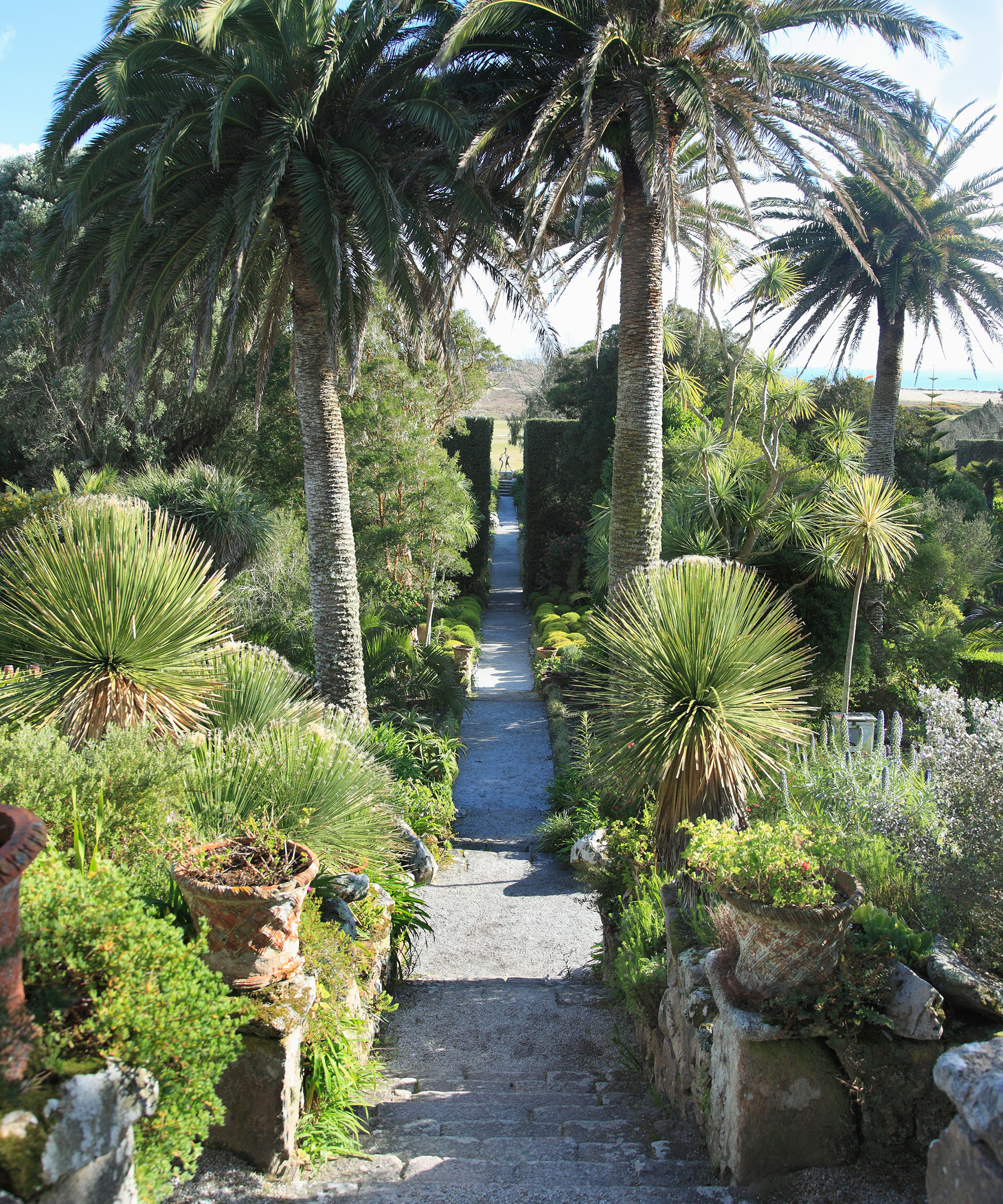
Not all flower beds need to about bright, bold blooms. Dramatic and elegant, architectural plants impart structure and provide a contemporary planting style that is easy to main and will give year-round interest.
In the design world they are considered indispensable, relied upon to create sculptural beauty and to draw the eye to specific parts of the garden, like in this stunning rock garden.
Exactly what plants are regarded as ‘architectural’ is a matter of opinion, but most professional gardeners would agree that hardy evergreen exotics like palms, bamboo and Musa basjoo are the main players.
Perennials with big leaves, such as rodgersia and rheum, and big, bold flowers like kniphofia and allium also qualify, as do topiary pyramids, spirals and spheres.
3. Grow fruit and vegetable in raised bed planters
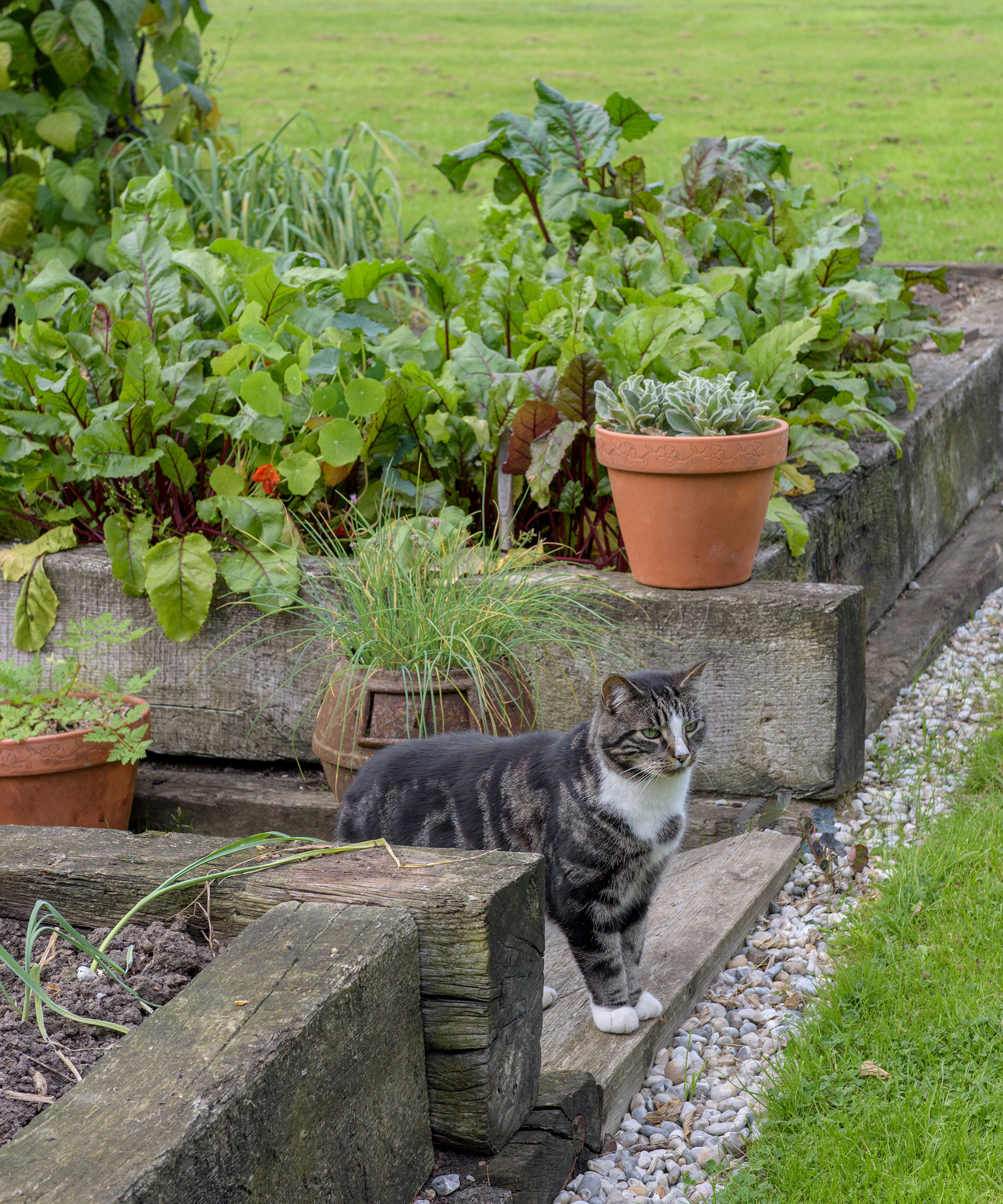
Fruit and vegetables can be grown in amongst ornamentals in garden borders or raised beds. Opt for compact varieties, such as blackcurrant, colorful crops, such as the bright scarlet Goji berry, and bold versions of everyday plants, such as the gorgeous ‘All Gold’ raspberry, which has amber-gold fruit.
Choosing raised beds means you don’t have to step onto the earth to tend your crops, which saves you having to aerate the soil by digging. They can be attractive features in their own right, for instance when built out of old railway sleepers or used as garden edging ideas for a patio seating area.
4. Opt for traditional rectangular flower beds
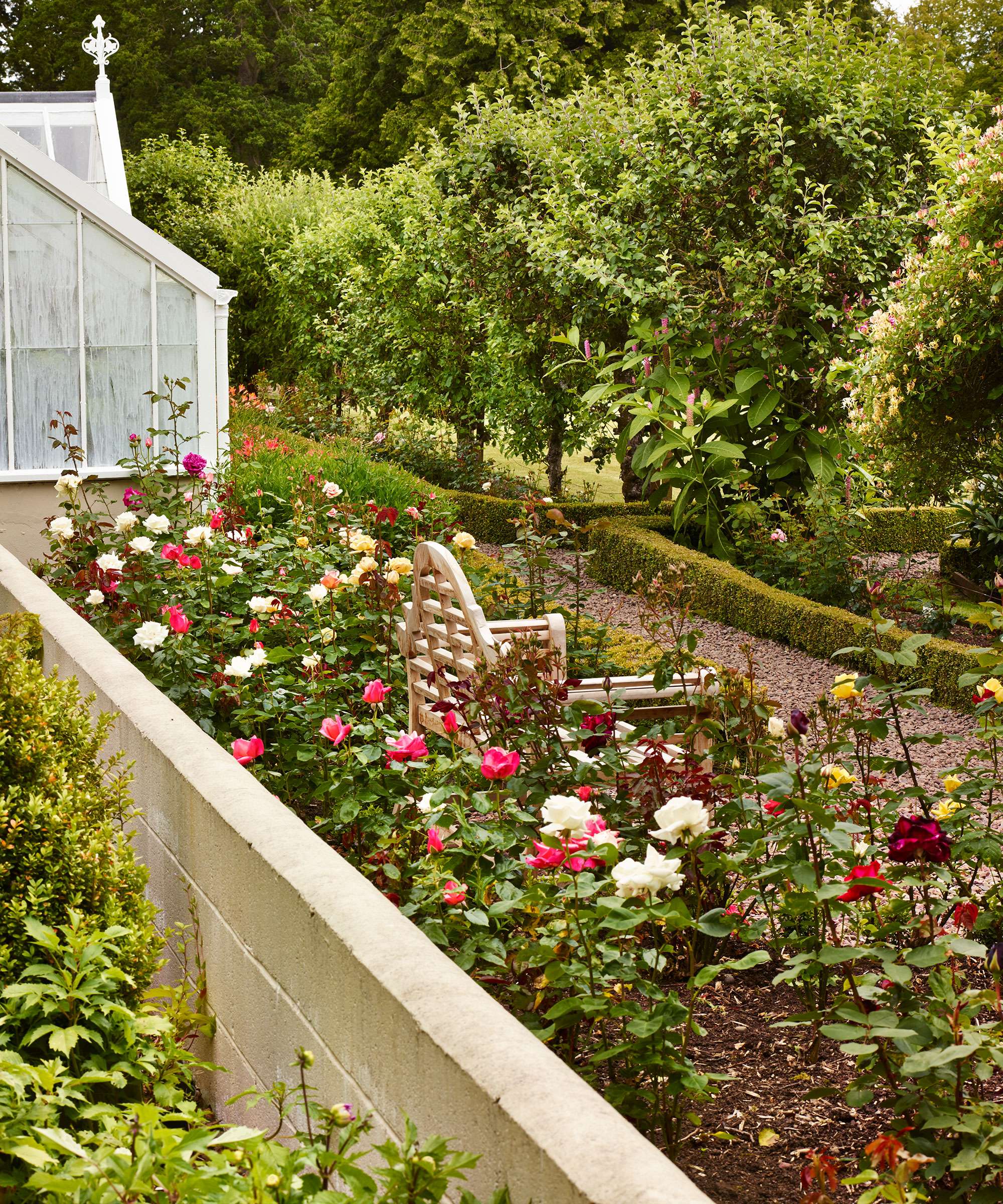
There’s a timelessness as well as formality about both parterres and traditional potagers, with their decorative arrangement of rectangular beds filled with flowers, fruit, herbs or vegetables, separated by straight paths in grass, gravel or brick.
Both provide versatile frameworks that can be shrunk or enlarged to adapt to varying sizes and shapes of garden, yet still work providing the proportions are maintained.
When planning how to plant a flower bed, add height with clematis, roses or sweet peas trained up steel or wooden obelisks.
Don't forget to include the best filler plants for sparse flower beds, too.
5. Create structure with a formal flower bed
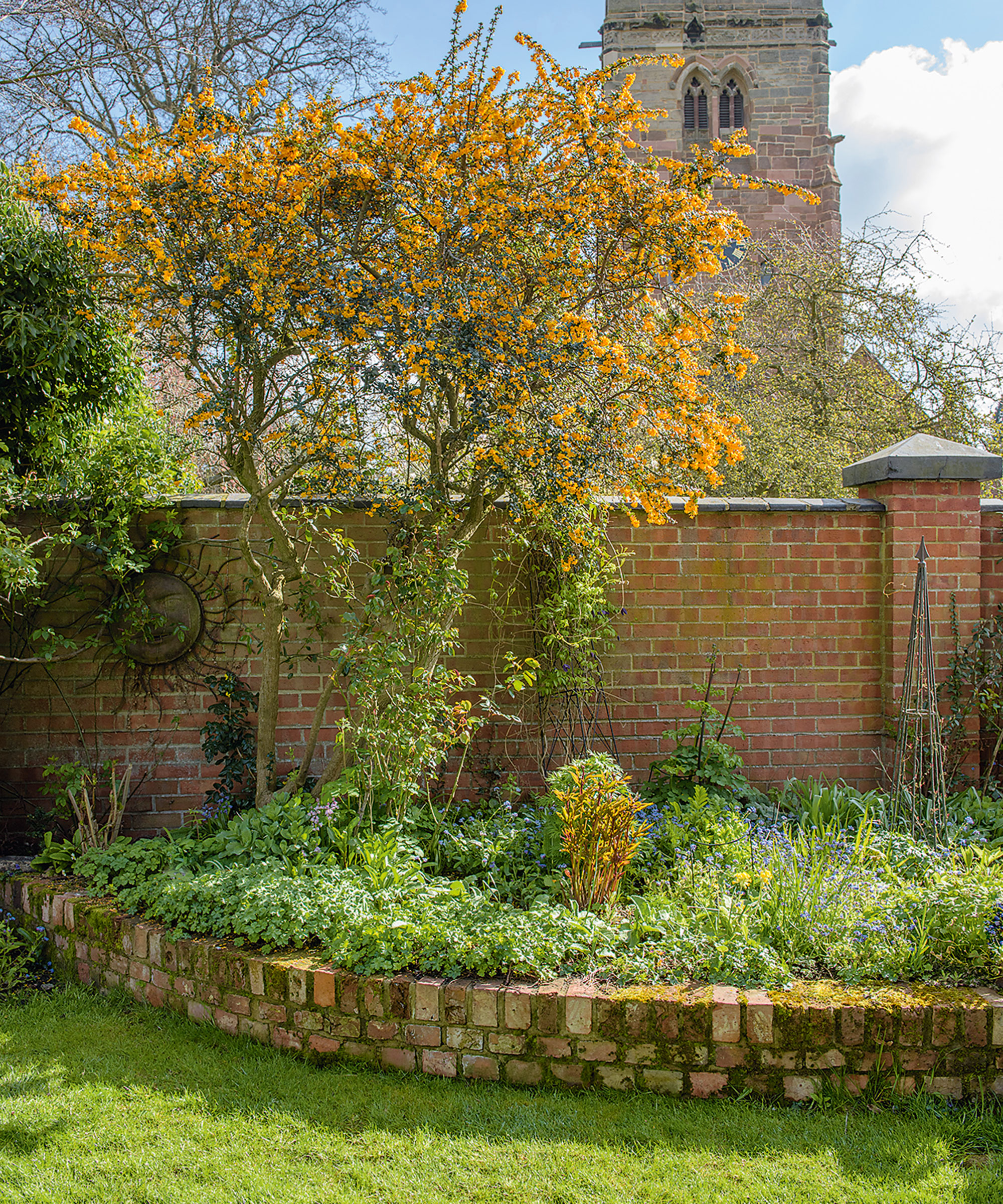
A formal layout and structure looks good built from traditional materials, such as flagstones, brick and timber, in natural finishes that complement the plants.
Flower beds can simply be contained by hard landscaping, or within crisply cut box hedges, a formal element that’s useful for binding together any informal planting within.
6. Add distinction with a standout feature – surrounded by beds
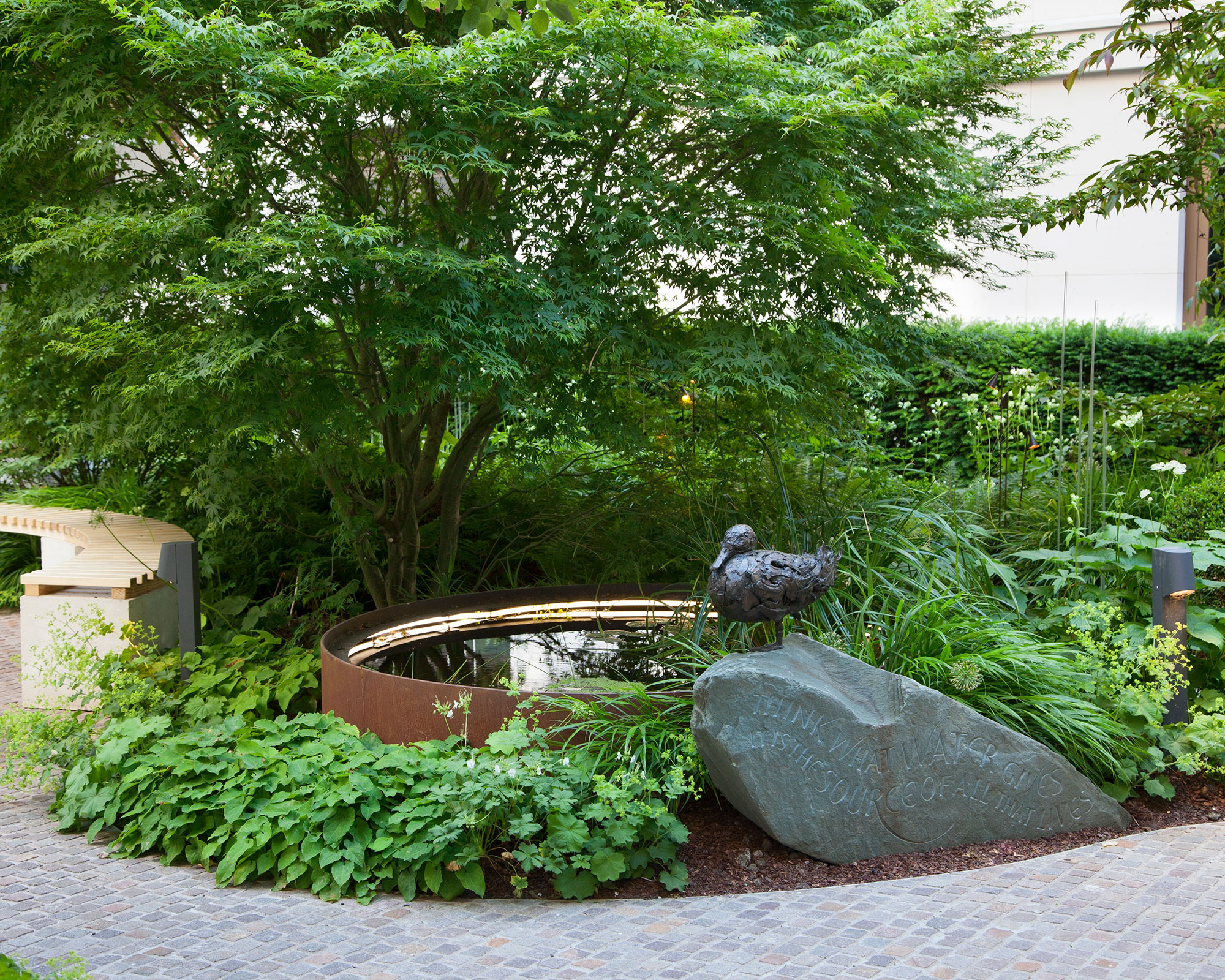
A central feature adds a hub around which the design flows. It could be as simple as a circular fountain enclosed by perennials, or as dramatic as life-sized topiary figures – birds, chess pieces and abstract shapes.
Ornaments such as statues, spheres or birdbaths also create eye-catching focal points, provided they are raised high enough on a plinth to be commanding and embraced by plants.
Proportion is paramount and, while a feature should be large and elaborate enough to attract attention, it should not be so imposing as to overshadow everything else.
7. Plant a perennial flower bed
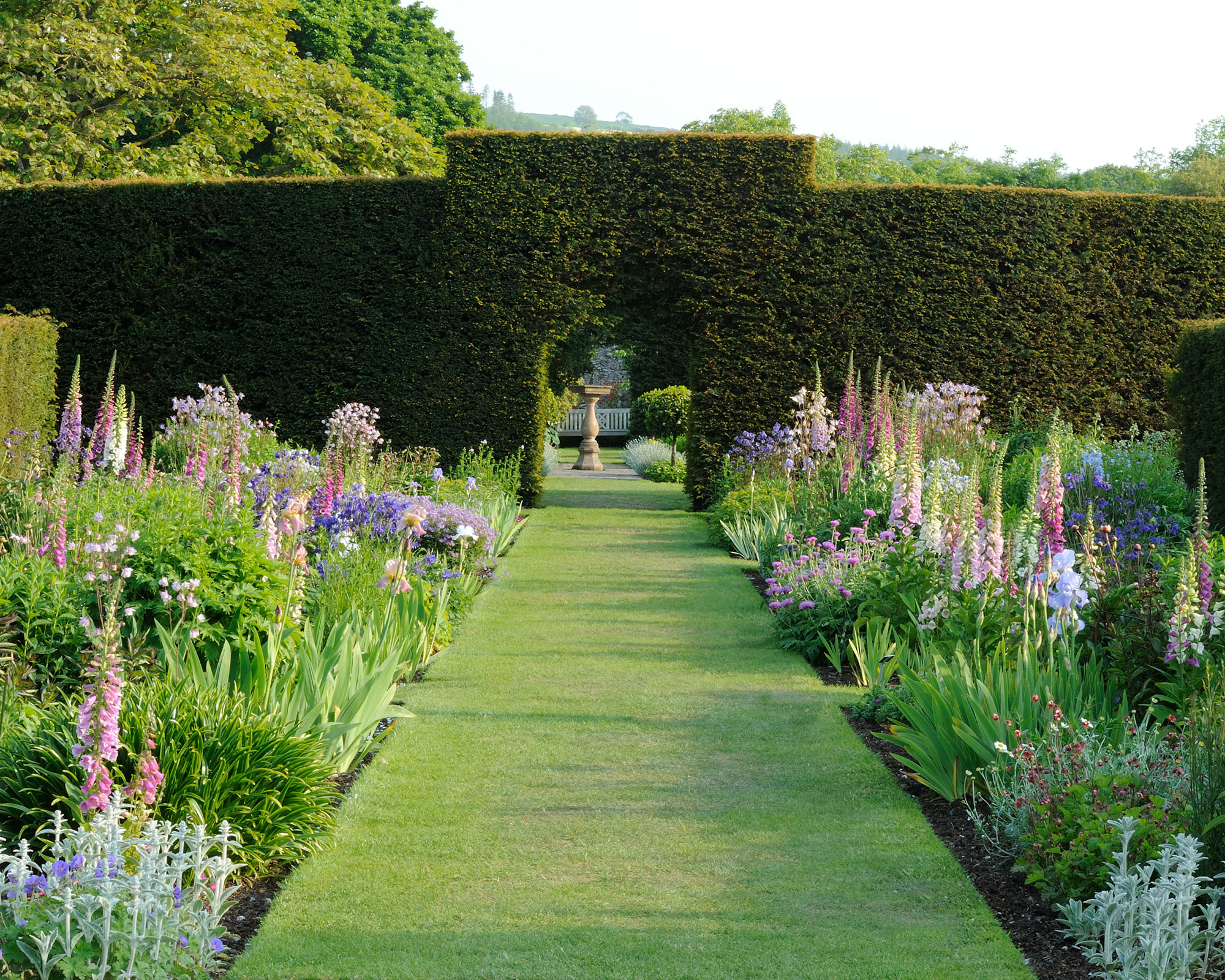
The great thing about perennials is exactly that: they’re perennial. They do their thing, filling the garden with fantastic flowers or long lasting colorful leaves – and then the next year they do it again, and again, and then the year after that.
There are two ways to go about choosing perennials. You can decide which features are missing from your planting and choose perennials that provide these qualities. Or you can simply choose perennials that you really like, that grab your attention, and then look around the garden and find homes for them. Collecting seeds is a cost effective way to fill your flower beds with your own homegrown stock.
Don’t be tied too rigidly by the old tall-at-the-back-short-at-the-front idea; clearly it makes sense, but short early flowers like hellebores make impressive clumps at the back and like the shade of taller perennials later. Tall see-through perennials such as Verbena bonariensis can be set towards the front.
8. Plant ornamental grasses to contrast with summer flowers
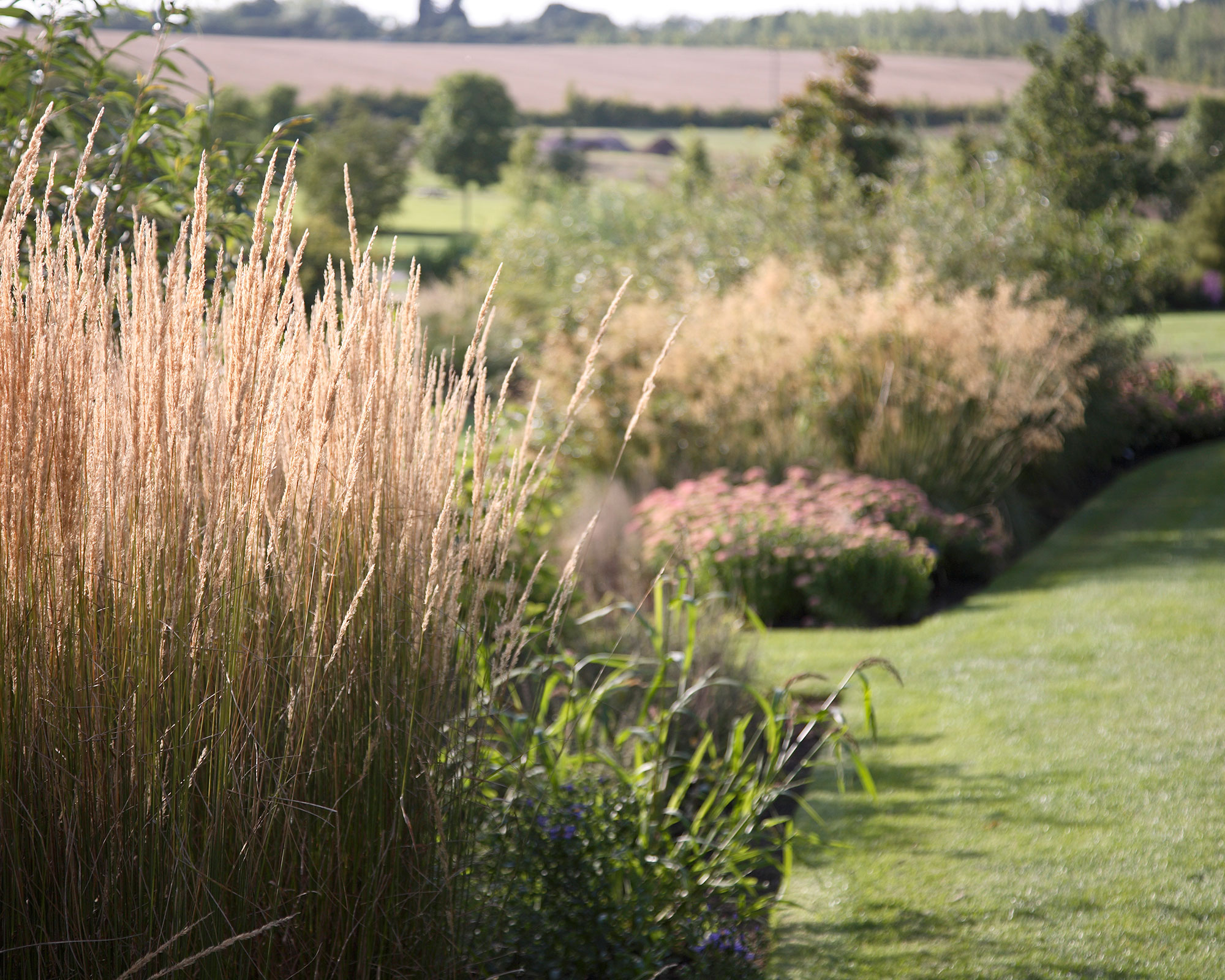
The popularity currently enjoyed by ornamental grasses is well deserved. Ornamental grasses are useful both as flowering plants in the garden and as foliage plants, with many being strikingly variegated, while other have waxy, glaucous leaves.
If you are growing them principally for use as cut material, a spare plot out of sight will be suitable, allowing you to hack at will without qualms about the wreckage left behind. But those perennial grasses that are used in a border should not, I suggest, be segregated in beds of their own.
When planning how to grow ornamental grasses, a collection of many grasses together looks messy. It is better to let them take their place in a mixed border where their foliage and habit contrast effectively with the broad leaves of hostas, for instance, or the bright color of tiger lilies, phloxes and other summer flowers.
9. Introduce a sensory element
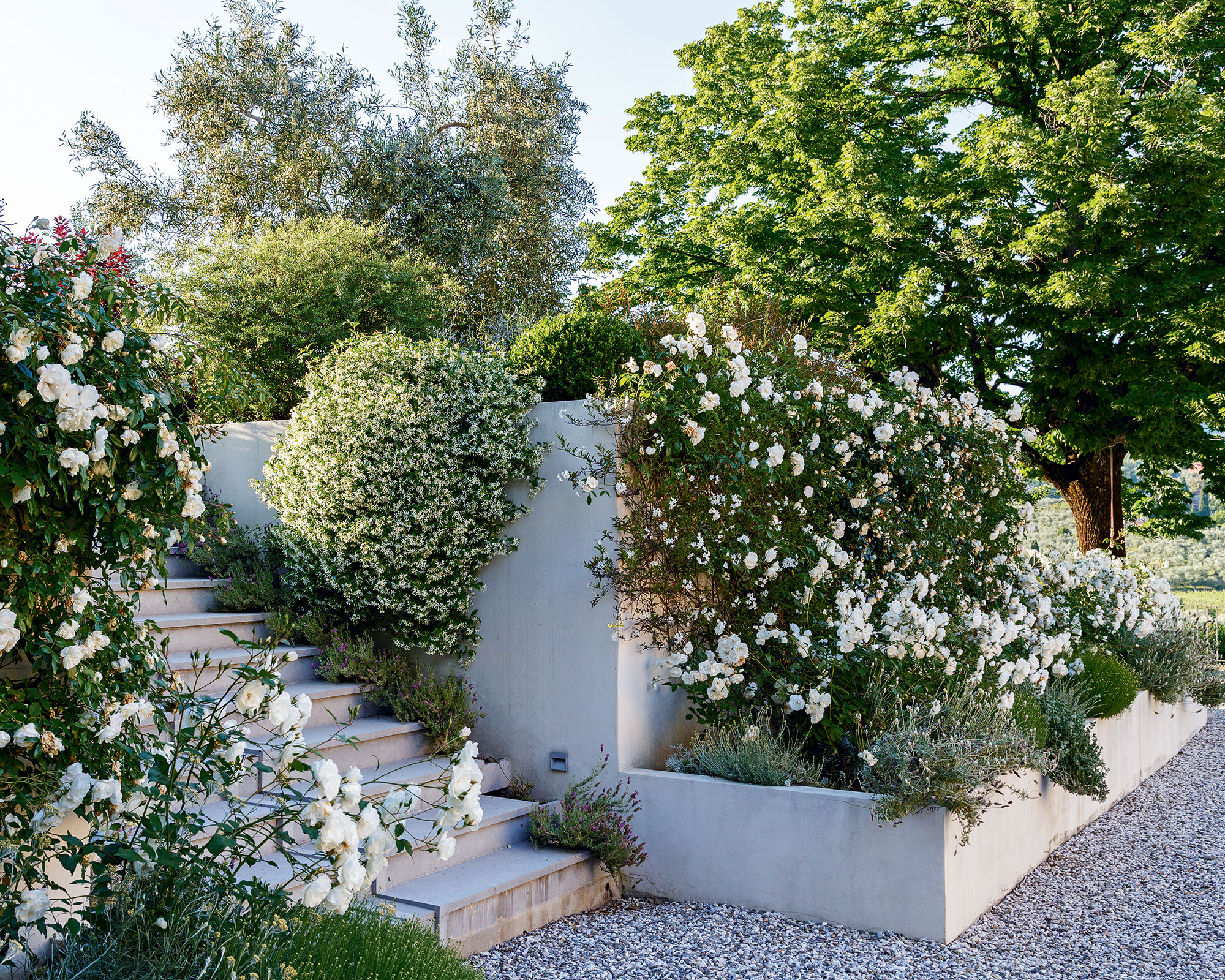
Dial up the sensory appeal of your garden flower bed to make it a richer, more playful space. Sensory gardens use plants and features to engage all five senses and are a joy for all, especially people who have sensory impairments.
A flower bed of old-fashioned scented plants, like lily of the valley, can stimulate memory in older people and those with dementia. Edible plants will encourage children to explore using touch and taste. And textures and rustling leaves provide a great way for sight-impaired people to experience the garden.
You could go for a bright planting palette or a monochrome one, for example selecting white flowers only.
10. Brighten a shaded spot with hostas
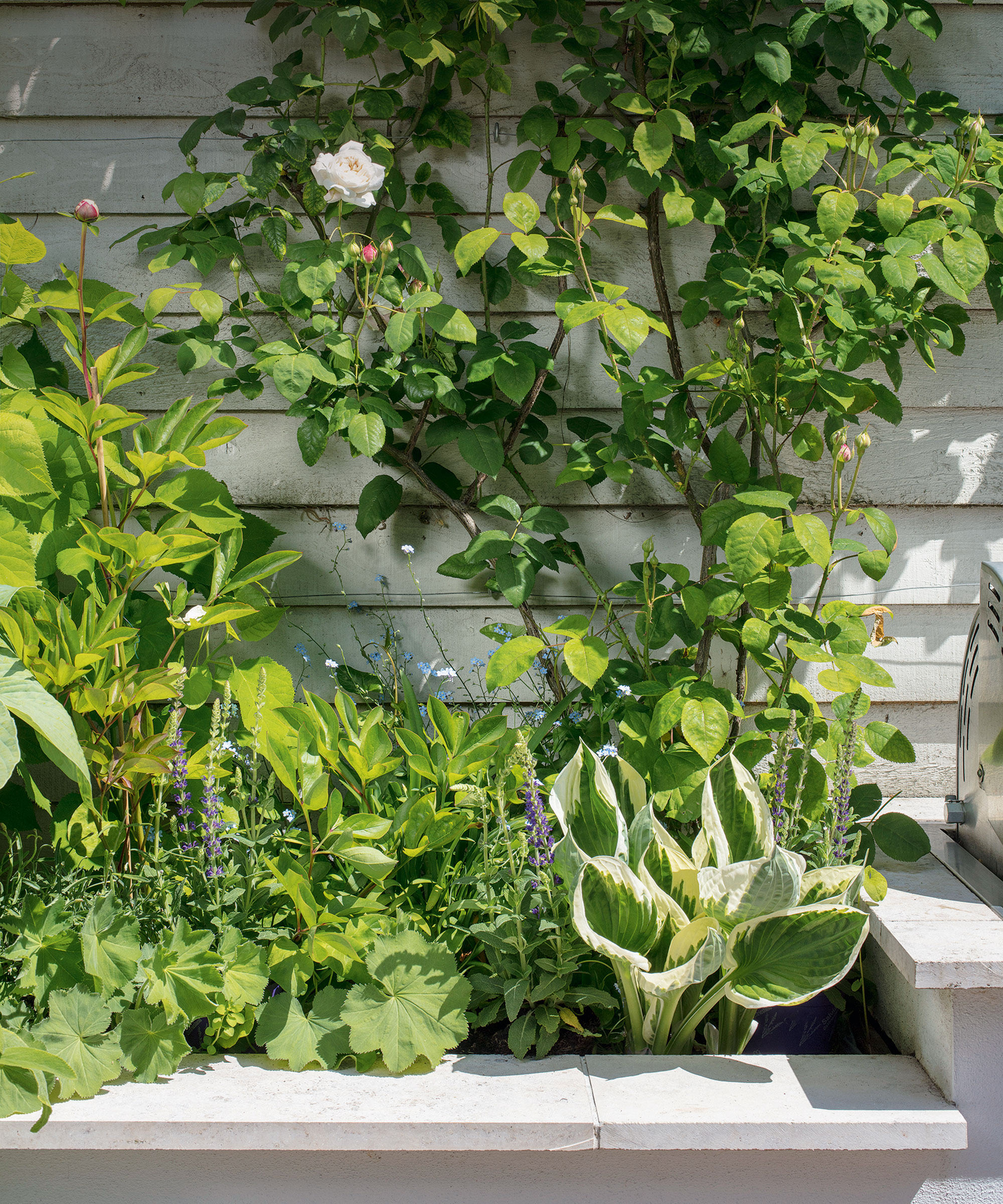
Surprisingly, flower beds can work wonderfully in the shade – you just have to make sure you pick the right plants.
Hostas are the perfect plant for a shaded garden. Lush, green and sculptural, these shade-loving plants add depth and drama to the garden. Be aware that hostas are slug magnets – but they don’t love all hostas. Some of the most popular hostas, such as ‘Halcyon’ and ‘Hadspen Blue’, are among those with the most dependable, bluish slug-proof leaves.
Smart garden shade ideas offer inspiration for creating a shaded spot in your outdoor space.
How do you make a flower bed look nice?
The best flower beds have been carefully crafted to contain a collection of plants that offer diversity in height and structure – so consider vertical garden ideas too – as well as tonal and seasonal variation. Above all, they include a range of plants that make excellent bedfellows, sitting happily together side-by-side.
By moving the plants around a little they can all be adapted to fit your own garden beds. As a general rule, you should keep taller plants towards the back of the flower beds – but avoid adhering to this too rigidly if you want a softer, more natural effect. And if you’re lucky enough to have large flower beds, simply increase the numbers, adding in more of your favorites.
Always choose the right plant for the right place, so if, for instance, you have a lot of tree cover over some flowerbeds, consider if woodland plants would be best suited to those spots.
What should I put in my flower bed?
There are so many plants you can put in a flower bed to make it bloom all-year round, so inspiration can be found anywhere from rose garden ideas to Mediterranean garden ideas.
It is worth keeping in mind that soft-stemmed herbaceous perennials (which usually die back each winter) tend to be faster-growing than shrubs. However shrubs – particularly evergreens – do provide interest throughout the year, so their value should not be ruled out.
Sign up to the Homes & Gardens newsletter
Design expertise in your inbox – from inspiring decorating ideas and beautiful celebrity homes to practical gardening advice and shopping round-ups.

Jennifer is the Digital Editor at Homes & Gardens. Having worked in the interiors industry for several years in both the US and UK, spanning many publications, she now hones her digital prowess on the 'best interiors website' in the world. Multi-skilled, Jennifer has worked in PR and marketing and occasionally dabbles in the social media, commercial, and the e-commerce space. Over the years, she has written about every area of the home, from compiling houses designed by some of the best interior designers in the world to sourcing celebrity homes, reviewing appliances, and even writing a few news stories or two.
-
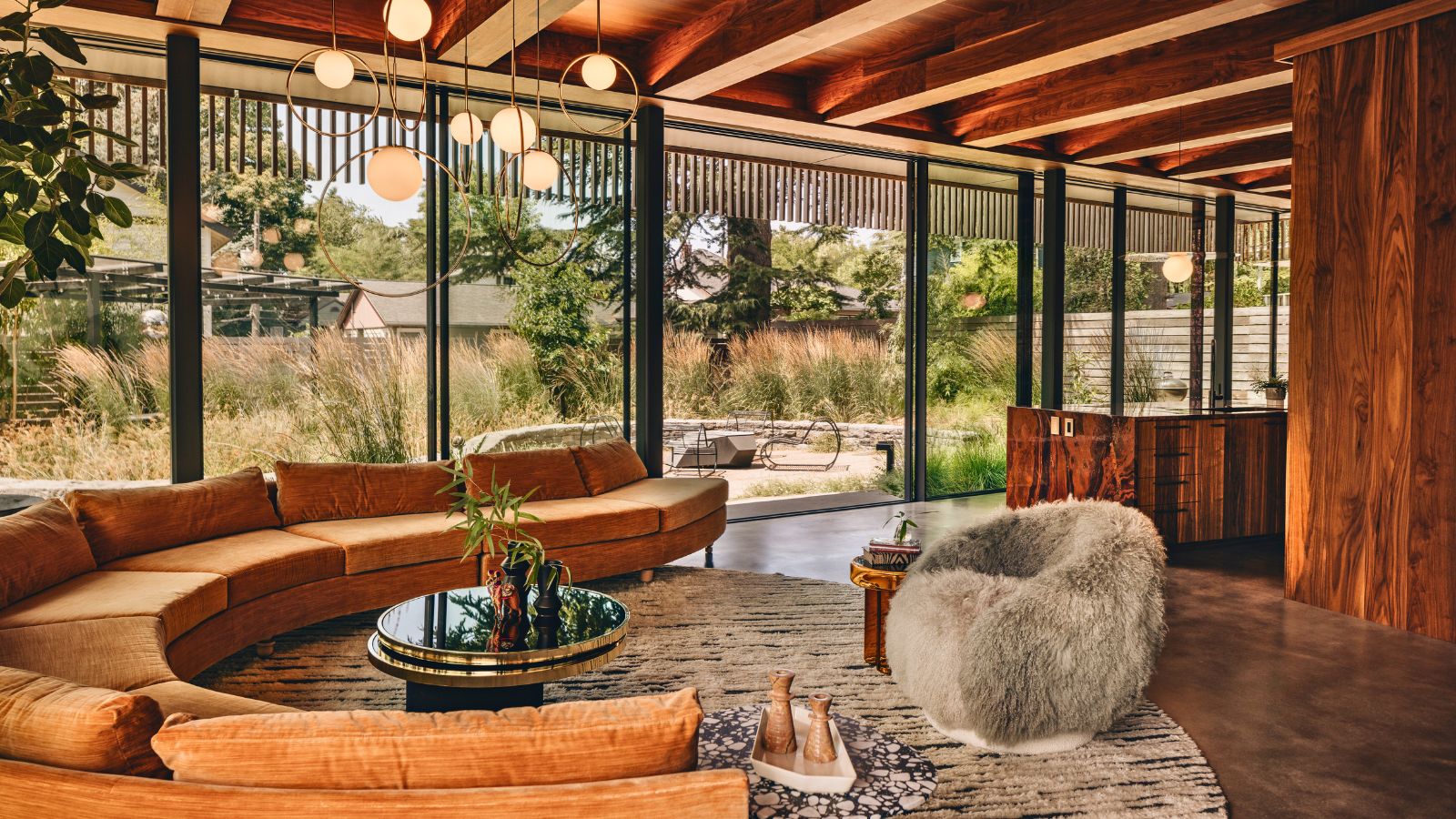 'Sexy disco-era Italy meets Japanese farmhouse in the Brazilian jungle' was the description the interior designer gave this glass-walled modernist home
'Sexy disco-era Italy meets Japanese farmhouse in the Brazilian jungle' was the description the interior designer gave this glass-walled modernist homeOffering a warm welcome that defies its stark, modernist lines, this archictectural gem is full of surprises
By Karen Darlow
-
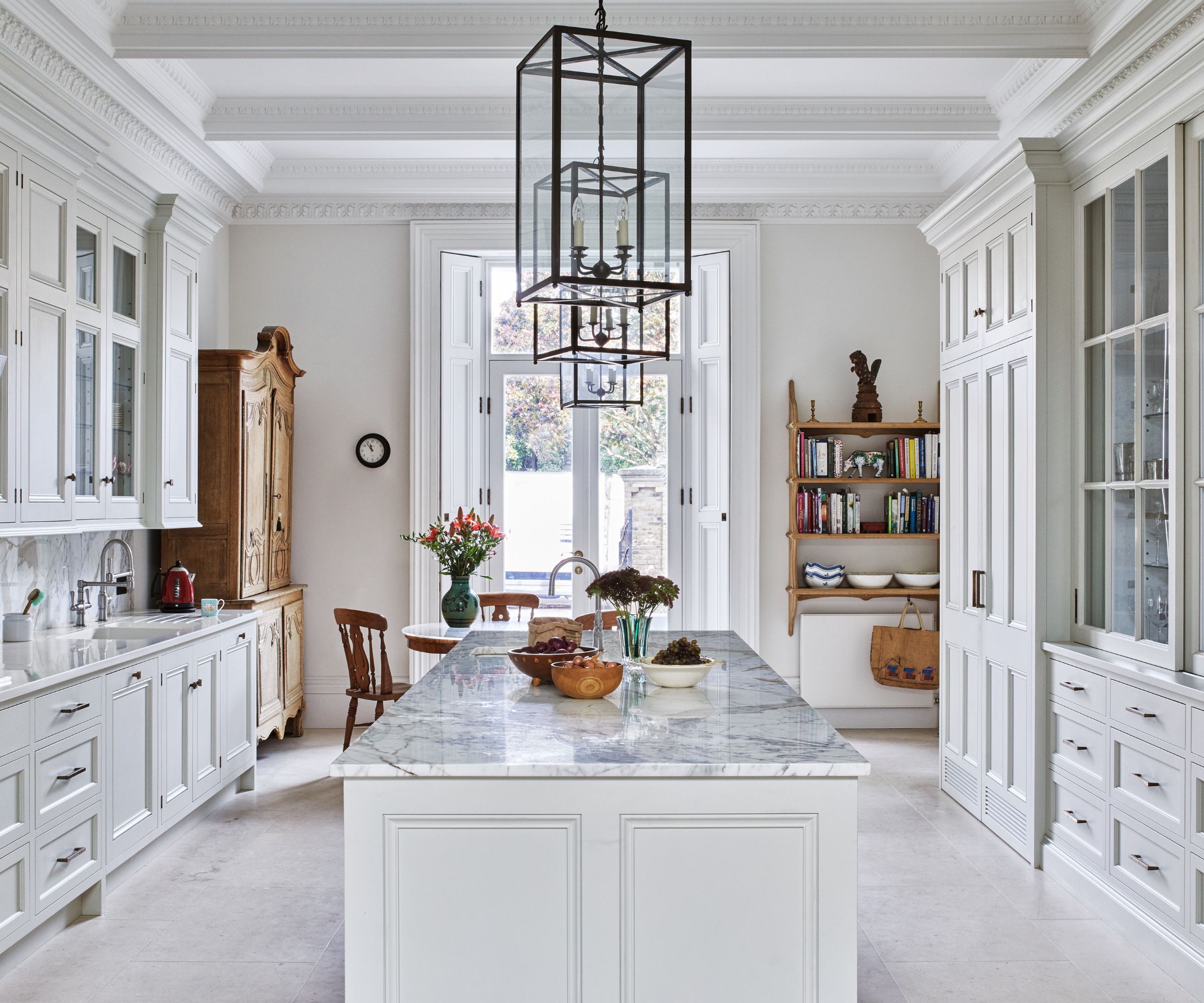 Are you making the most out of the estate sales in your area? These are the 5 most valuable items you should be shopping for
Are you making the most out of the estate sales in your area? These are the 5 most valuable items you should be shopping forVintage lovers and antique experts share the objects you should always look out for when you're exploring an estate sale
By Eleanor Richardson